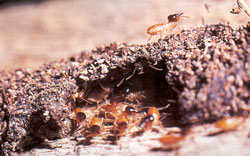Termite Treatment

Termites are sometimes referred to as 'white ants' because of their creamy colouring and ant-like appearance. There are over 350 species of termites in Australia of which some 20 species can damage timber in houses. In nature, they assist in the recycling of organic matter and nutrients back to the soil. Termites avoid light and rarely come out into the open. Often they are found within timbers where they leave a wafer thin layer to protect themselves from the outside environment. Sometimes they conceal themselves within mud-like tubes or galleries.
Termites in the home
Homeowners should have regular inspections of all accessible timber and potential termite entry points. Inspections should be carried out by a licensed pest manager who can identify timber problems and advise on individual solutions. Local councils or licensed pest managers should be able to advise on the frequency of inspections. If termite damage is found in the home, don't panic. Do not disturb the termites by using household sprays or removing infested wood. There is no immediate threat to the house, so take time to investigate the size and nature of the problem as well as all the available options.
At certain times of the year homeowners may notice winged termites in and around their house. This is the termites annual flight from the nest. This does not mean that there is a termite colony attacking the house. There may however be a nest nearby if there are large numbers of these termites.
Sequence of photos showing termite damage under a set of stairs.

Control - Prevention and Nest Destruction
Approved methods of preventative termite control are covered by Australian Standard 2 AS 3660.1 (1995). Remedial termite control is covered by AS 3660.2 (2000).
Prevention
Barriers are designed to deter termites or bring their presence out into the open. Physical barriers can be applied to new constructions. Granitgard can be placed under concrete slabs, foundations and within cavity walls. Hardware and building suppliers should be able to advise on the application and availability of these products. Chemical barriers can be used for new and existing structures.
- Granitgard is a barrier of crushed rock of a regular size. Termites find the particles too heavy to carry, too hard to chew and too small to crawl between.
- Antcaps are installed at the top of underfloor piers or stumps to force termites into the open where they are easier to detect during regular inspections.
- Soil chemical barriers are applied under or around the foundations of a building. There are currently several chemicals registered for use as chemical barriers: Premise, Termidor, Chlorpyrifos/Dursban (an organophosphate) and Bifenthrin (a synthetic pyrethroid). It is no longer legal to use organochlorines for environmental and health reasons.
- Environmentally friendly methods of control are available through some pest managers. However, they are not always as effective as the methods described above.
-
To discourage termites and improve inspection access
- Fix leaking water pipes and drains
- Improve sub-floor ventilation, drainage and access
- Ensure concrete slab is properly designed, compacted, cured and easily inspected
- Do not leave timber formwork behind, especially under a suspended floor construction
- Have a program of regular inspections arranged with a pest controller (early spring to late summer is best - termites are most active at this time)
- Avoid storing potential termite food (eg. timber stacks, old stumps, building refuse) near buildings
- Use termite resistant timber (naturally resistant or treated - ask a timber supplier)
- Remove termite colonies from building vicinity
Nest destruction
This is usually undertaken when an infestation has been identified. If the nest can be found it may be possible to destroy it directly. Check any trees, stumps, wood stockpiles or other sites that may harbour termites within 50 metres of the house. The nest can be destroyed by complete removal or by the use of a short lived insecticide.
Where a nest cannot be found, a licensed pest manager may apply a small amount of poison into active termite workings so that the worker termites carry it back to the nest and spread the poison throughout the colony. The pest manager may also use a termite bait box method and termite dusting, which increases the proportion of termites that are dusted whilst minimising the amount of poison left within timbers or other parts of the environment.
NOTE: Chemical treatments are only available to licensed pest controllers.
For further information contact Melbourne Pest Control.
We are a licensed installer of Kordn products.
Kordn provides both allergy and environmentally friendly protection against termites. Suited for both domestic and commercial use, these heavy-duty barriers offer 50 years of protection – the life cycle of a building termite.
Invented, developed and tested in Australia, Kordn only uses authorised installers to ensure quality installation for your peace of mind
We are a licensed installer of HomeGuard products.
HomeGuard uses a combination of a physical barrier, and termiticide to produce high-quality polymer products that are made to last.
The protection is non-invasive and non-toxic, making it safe for occupants and installers alike. Registered with the Australian Pesticide & Veterinary Medicines Authority (APVMA), Homeguard products prevent access termites gaining access to your building
Termseal is a physical termite barrier that is installed into penetrations and around the perimeter wall lines of a building Termseal is a green product and comes with a ten year warranty see the link to there web site for technical information. All work is carried out to Australian standard AS 3660.1




